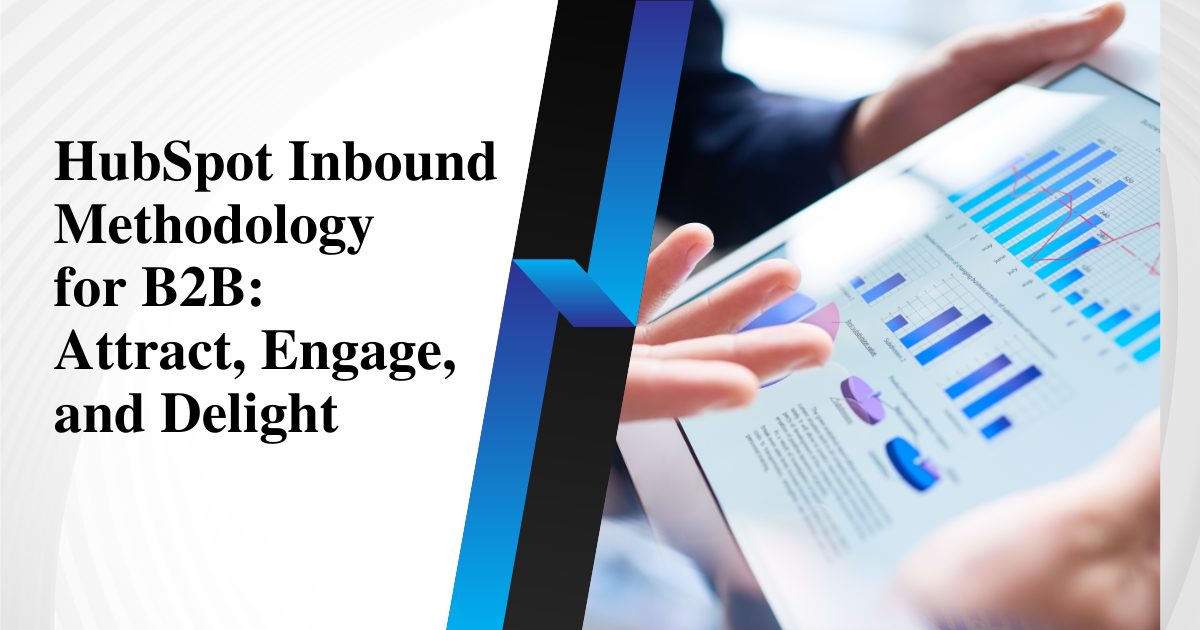In today's digital world, where traditional marketing methods are less effective, businesses are turning to inbound marketing strategies to reach their target audience. HubSpot's Inbound Methodology is a powerful approach that helps B2B companies attract, engage, and delight their prospects and customers. By understanding the significance of B2B marketing and the core principles of inbound marketing, businesses can leverage HubSpot's methodology to drive growth and achieve remarkable results.
Attracting your Target Audience
![done_(2)[1]](https://resources.straightgrowth.com/hs-fs/hubfs/done_(2)%5B1%5D.png?width=1200&height=630&name=done_(2)%5B1%5D.png)
To effectively attract your target audience, it is crucial to first identify your ideal customer profile (ICP). This involves understanding your customers' pain points, motivations, and demographics.
Conducting thorough keyword research is also essential, as it helps you optimize your content to rank higher in search engine results.
Creating compelling and optimized content that addresses your audience's needs will further attract their attention. Additionally, leveraging social media platforms and implementing search engine optimization (SEO) strategies will increase your online visibility and attract more qualified leads.
Engaging your Prospects
Engaging your prospects is a critical step in the inbound methodology. To achieve this, it is important to develop a robust lead nurturing strategy.
This involves providing valuable and tailored content that educates, informs, and solves your prospects' problems.
Crafting personalized email campaigns allows you to establish a deeper connection with your audience, increasing the likelihood of conversion. Utilizing marketing automation tools streamlines your communication efforts and ensures timely follow-ups.
Implementing effective call-to-actions (CTAs) and utilizing chatbots and live chat enhance engagement by enabling immediate interaction and assistance.
Delighting your Customers
![done_(3)[1]](https://resources.straightgrowth.com/hs-fs/hubfs/done_(3)%5B1%5D.png?width=1200&height=630&name=done_(3)%5B1%5D.png)
Delighting your customers is key to maintaining long-term relationships and fostering loyalty. Understanding the importance of customer satisfaction drives businesses to implement effective customer feedback mechanisms.
By actively seeking feedback from customers, businesses can continuously improve their products or services. Delivering exceptional customer service further adds value to the customer experience.
Nurturing customer relationships through targeted email marketing helps businesses stay top-of-mind and encourages repeat purchase. Advocacy programs and referral systems incentivize satisfied customers to promote your brand to others, amplifying your reach and credibility.
Get a Free HubSpot Portal Audit Now!
Measuring and Analyzing Success
![done_(4)[1]](https://resources.straightgrowth.com/hs-fs/hubfs/done_(4)%5B1%5D.png?width=1200&height=630&name=done_(4)%5B1%5D.png)
To gauge the effectiveness of your inbound marketing strategy, it is crucial to define key performance indicators (KPIs) that align with your business goals.
Utilizing analytics tools allows you to collect and analyze data to make data-driven decisions. A/B testing different strategies and optimizing them based on results improves conversion rates and customer behavior.
By continuously monitoring and analyzing your metrics, you can make informed decisions and refine your inbound marketing strategy for optimal results.
Integrating HubSpot's Inbound Methodology into B2B Sales
Effective integration of HubSpot's Inbound Methodology into B2B sales requires aligning marketing and sales teams.
By fostering collaboration and ensuring consistent messaging, businesses can seamlessly transition prospects from the marketing funnel to the sales pipeline.
Utilizing customer relationship management (CRM) and lead management systems provides a unified view of prospects and customers, enabling both teams to work together efficiently.
Implementing effective lead scoring measures prospects' engagement and helps prioritize follow-up actions. Streamlining the sales process through automation saves time and resources, enhancing overall efficiency.
Challenges and Solutions in Implementing HubSpot's Inbound Methodology for B2B
![done_(5)[1]](https://resources.straightgrowth.com/hs-fs/hubfs/done_(5)%5B1%5D.png?width=1200&height=630&name=done_(5)%5B1%5D.png)
Implementing HubSpot's Inbound Methodology for B2B may encounter challenges, but with the right solutions, businesses can overcome them.
Overcoming resistance from traditional marketing methods requires educating stakeholders about the benefits and proven success of inbound marketing.
Adapting to constant technological advancements necessitates staying updated with industry trends and embracing new tools and platforms.
Managing content creation and distribution efficiently involves having a well-defined content strategy and utilizing a content management system.
Overcoming internal culture shift challenges requires effective change management practices, internal training, and strong leadership.
Get a Free HubSpot Portal Audit Now!
FAQs: Addressing Common Questions about HubSpot's Inbound Methodology for B2B
![done_(6)[1]](https://resources.straightgrowth.com/hs-fs/hubfs/done_(6)%5B1%5D.png?width=1200&height=630&name=done_(6)%5B1%5D.png)
- What is the cost of implementing HubSpot's Inbound Methodology?
The cost of implementing HubSpot's Inbound Methodology can vary depending on the specific requirements and needs of your business, as HubSpot offers different pricing tiers and packages. - How long does it take to see tangible results?
The time it takes to see tangible results with HubSpot's Inbound Methodology can vary based on factors such as your industry, competition, existing marketing efforts, and the effectiveness of your implementation, but typically it may take several months to start seeing noticeable outcomes. - Can HubSpot's Inbound Methodology be customized to our industry?
Yes, HubSpot's Inbound Methodology can be customized to various industries as it provides flexibility and tools that can be tailored to fit the specific needs and characteristics of different business sectors. - Is it possible to integrate HubSpot with existing systems?
HubSpot offers various integration options, allowing you to connect and integrate with existing systems such as CRM platforms, email marketing tools, customer support systems, and more, providing a seamless flow of data and information between your different systems. - Are there any specific training resources available?
Yes, HubSpot provides a range of training resources including online courses, documentation, tutorials, webinars, and a dedicated HubSpot Academy that offers comprehensive training and certifications to help users maximize their understanding and utilization of the platform.
Conclusion: Embracing HubSpot Inbound Methodology for B2B Success
In conclusion, HubSpot Inbound Methodology offers numerous benefits and advantages to B2B businesses.
By attracting, engaging, and delighting their target audience, businesses can drive growth and achieve remarkable results.
Embracing this methodology requires a playful and strategic approach to content creation, personalized engagement, and continuous improvement.
By adopting HubSpot Inbound Methodology, businesses can transform their B2B marketing efforts and position themselves for long-term success.
You may also like to read about Unlocking Growth Potential: A Deep Dive into HubSpot's Lead Gen Features for B2B

